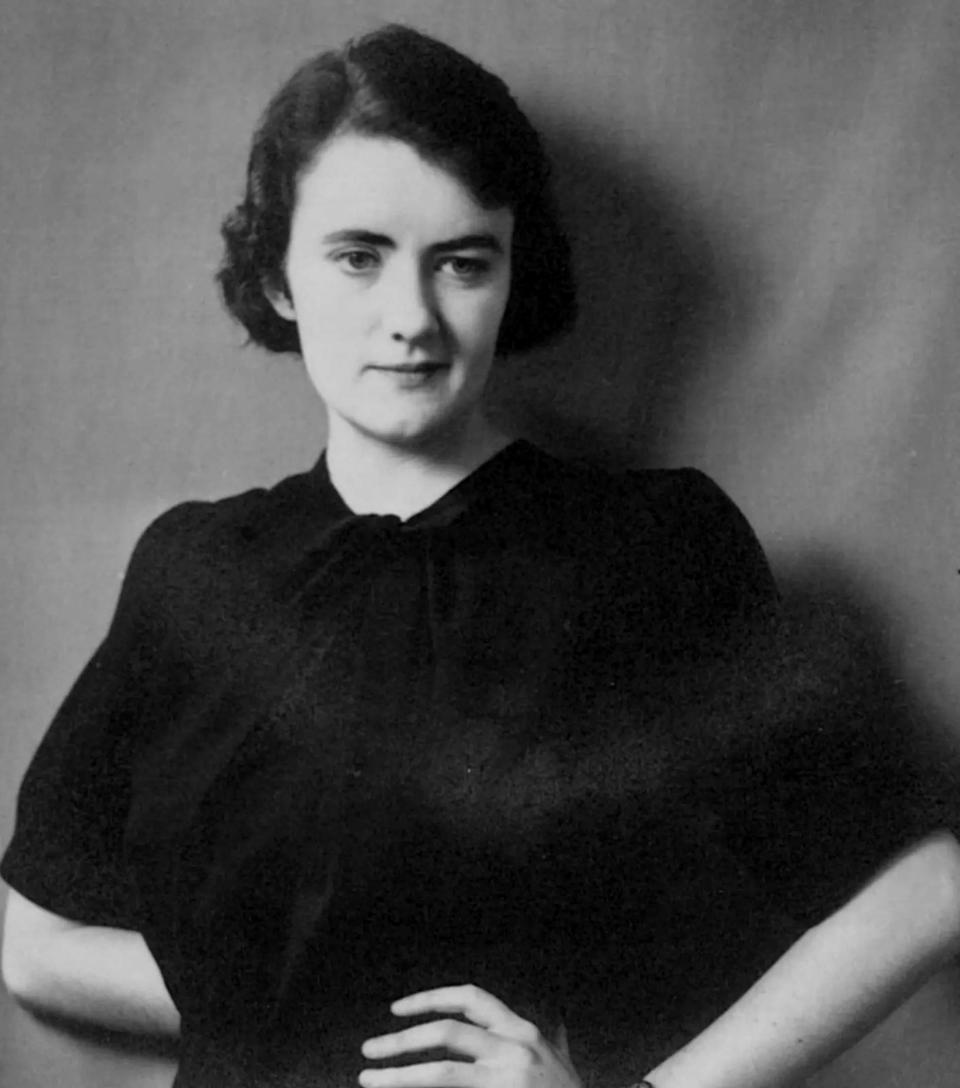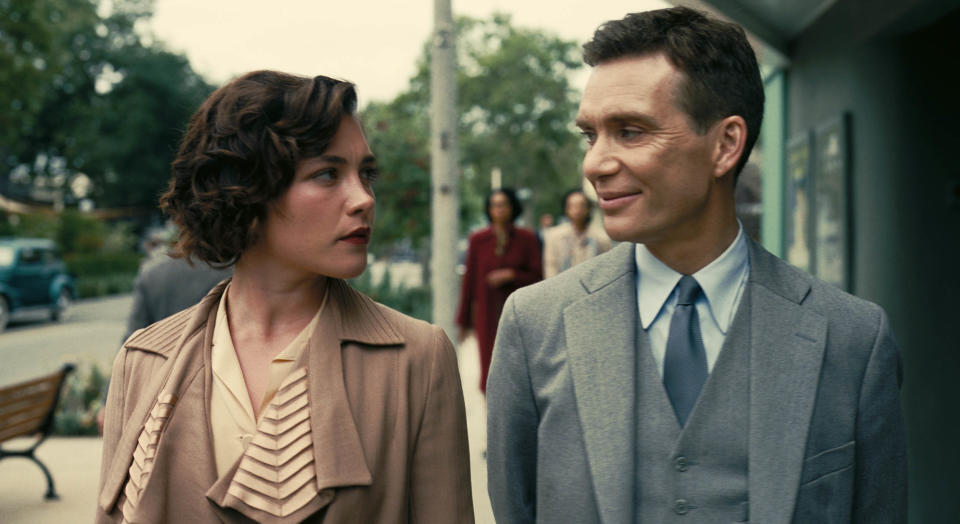Who was Jean Tatlock? The true story of Florence Pugh's 'Oppenheimer' character
- Oops!Something went wrong.Please try again later.
Christopher Nolan’s anticipated movie “Oppenheimer” follows the life of J. Robert Oppenheimer, the physicist credited with the development of the atomic bomb in the Manhattan Project during World War II.
While Oppenheimer is the movie's focal point, it features other characters based on real people, like Oppenheimer’s brother and the women in his life.
“These women helped create him as a human being of feeling and character,” Patricia Klaus, author of “An Atomic Love Story: The Extraordinary Women in Robert Oppenheimer’s Life,” told the Mercury News in 2013. “Robert is often described as brilliant and arrogant, without friends. But in these relationships — especially with Jean and Ruth — there was a depth of affection that helped make him the person he was. They humanized him, in a way that power politics never did.”
In the movie, Florence Pugh takes on the role of Jean Tatlock, a woman known to have been Oppenheimer’s lover before her early death in 1944.
Read on to learn more about the true story of Tatlock and her relationship with Oppenheimer.
Who was Jean Tatlock?

Tatlock was born in 1914. Her father, John Tatlock, was an acclaimed professor of English medieval literature; her mother, Marjorie Feldman, had been one of his former students. She grew up moving between Cambridge and California, where her father was head of the English Department at Stanford.
While Tatlock was known for her relationship with Oppenheimer, she grappled with her sexuality growing up. Tatlock was childhood friends with the poet and novelist May Sarton. In the book “An Atomic Love Story,” authors piece together a longing in their correspondence, as Tatlock explored her sexuality out loud: “Last year there was a period where I thought I was a homosexual,” but later wrote, “I don’t love you that way.” She concluded, “Adolescence is harder even than I had thought.”
She also experienced depression, as did Oppenheimer, per “Atomic Love.”
After graduating from Vassar College in 1935, Tatlock earned a psychiatry degree from Stanford Medical School and completed her residency at Mount Zion Hospital in San Francisco.
What was Tatlock's relationship with Oppenheimer like?
Tatlock and Oppenheimer met at a house party in 1936 while she was a student at Stanford Medical School and he was a physics professor at the University of California, Berkeley.
In the book “Atomic Love,” authors offer up an explanation of their connection: “Much about Jean would have pleased Robert: Her Vassar/Harvard connections and New England pedigree; that she was fluent in French and a quick and critical thinker; that she was comfortable in academia and yet not in awe of it. She had a brother who was soon graduating from medical school at Harvard … she loved poetry, and was fascinated with the promise of psychotherapy.” But their future, the authors wrote, was “obscured by the gathering war clouds.”

The couple started to date and carried on an intense romantic relationship until 1939, during which Oppenheimer proposed to Tatlock twice only to be turned down each time.
“Twice they had come close to declaring themselves engaged. But how was it possible to think of fulfilling his needs, of becoming another and caring for children? Sometime that year she told him she could not marry him,” the book “An Atomic Love Story” reads. They still remained close after the breakup: “They cared too much for each other to stay far apart," the book reads.
Though Oppenheimer married Katherine “Kitty” Puening a few years later in 1940, he continued to visit Tatlock in San Francisco as late as 1943.
Though they were never married, some speculate that Oppenheimer named the Trinity nuclear test after a John Donne poem by the same name that Tatlock particularly loved, per the Atomic Heritage Foundation.
Tatlock was a member of the Communist Party
Like Oppenheimer’s wife Kitty Puening, she was also a member of the Communist Party, writing and reporting for the West Coast-based Communist newspaper the Western Worker.
Tatlock’s association with Communism was later used as key evidence against Oppenheimer in the 1954 security hearing that led to the revocation of his security clearance.
They scrutinized him over a 1943 meeting they had when he was working at Los Alamos to create the atomic bomb. At the time, he was married with child. He said of the meeting at his 1954 hearing, “We had been very much involved with one another and there was still very deep feeling when he saw each other.”
How did Tatlock die?
Tatlock was found dead in her San Francisco apartment on January 5, 1944. Her father discovered her with her head submerged in the bathtub and an unsigned note.
She was 29 years old.
"I am disgusted with everything," Tatlock wrote. "To those who loved me and helped me, all love and courage. I wanted to live and to give and I got paralyzed somehow. I tried like hell to understand and couldn’t ... I think I would have been a liability all my life — at least I could take away the burden of a paralyzed soul from a fighting world."
She had clinical depression and the cause of death was ruled as a suicide.
Some, including Tatlock's brother Hugh, have speculated that her death was a result of foul play by intelligence agents from Los Alamos, but no evidence has been found to support this theory. Tatlock was found dead in her San Francisco apartment on January 5, 1944. Her father discovered her with her head submerged in the bathtub and an unsigned note.
This article was originally published on TODAY.com

